Abstract
The aging of ground beef was effected by storing in gas-impermeable, sterile plastic bags with incubation at 7 and 15 C. Control meat from the same preparations was wrapped in aluminum foil and stored at the same temperature. In three experiments where control meat was tested, aged meat did not attain a log bacterial number of ca. 8.4 per gram until an average of 6 days after this level was reached in control meats. This degree of difference was shown in values for both extract-release volume (ERV) and water-holding capacity. The previously reported ERV value of around 25, which was found to correspond to an average log bacterial number of ca. 8.5 per gram for ground beef allowed to spoil in aluminum foil and freezer paper, was approximated for aged meats, which required an average of 9.7 days to attain this number compared with 4.1 days for unaged meats. Plate count methods indicated the predominant flora of aged beef to be gram-negative, facultatively psychrophilic rods.
Full text
PDF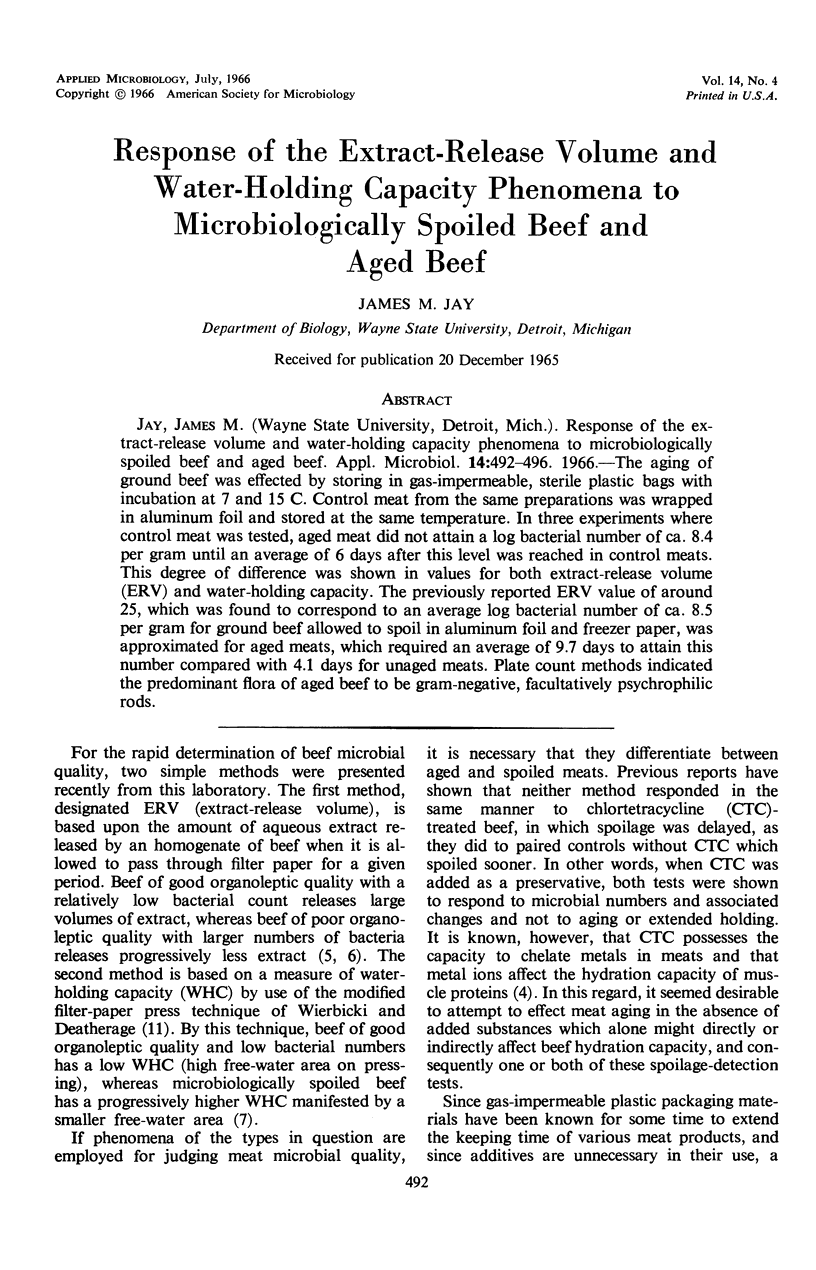
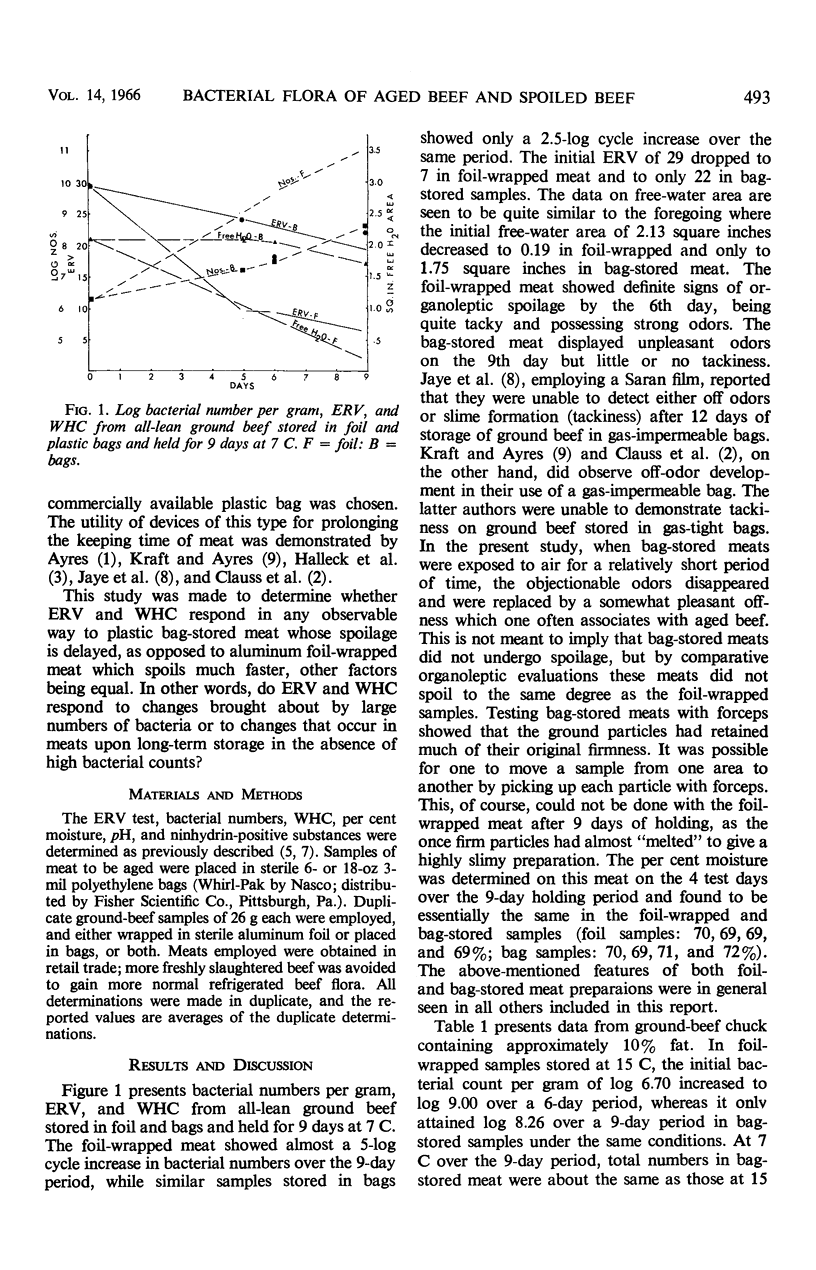
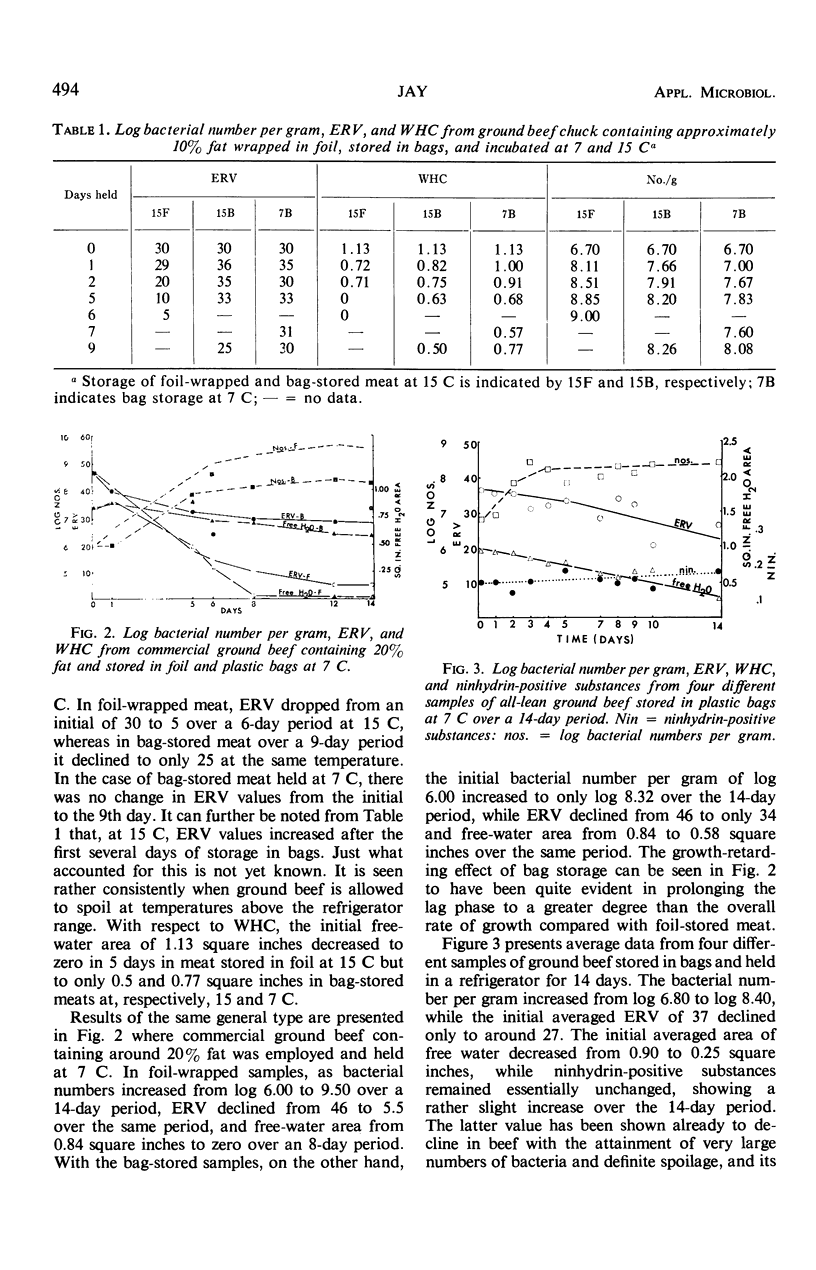
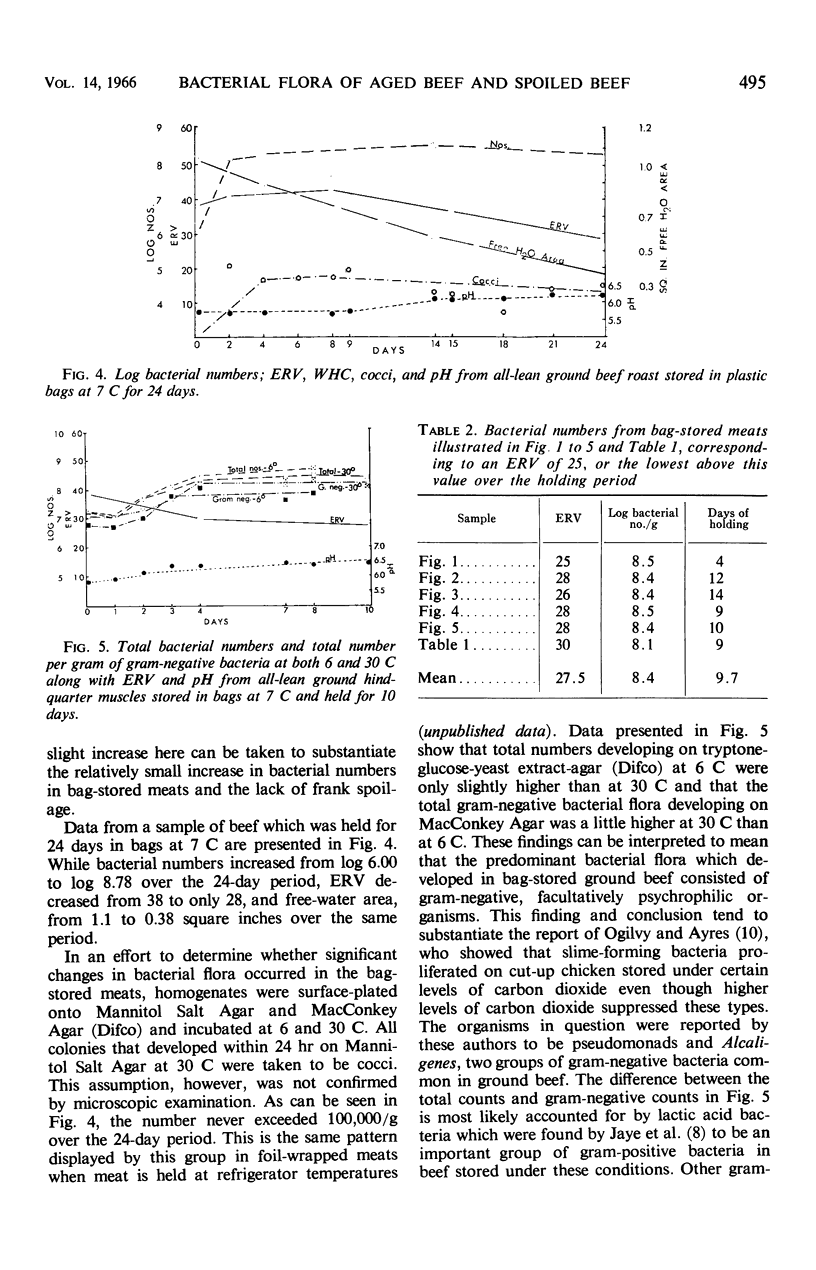
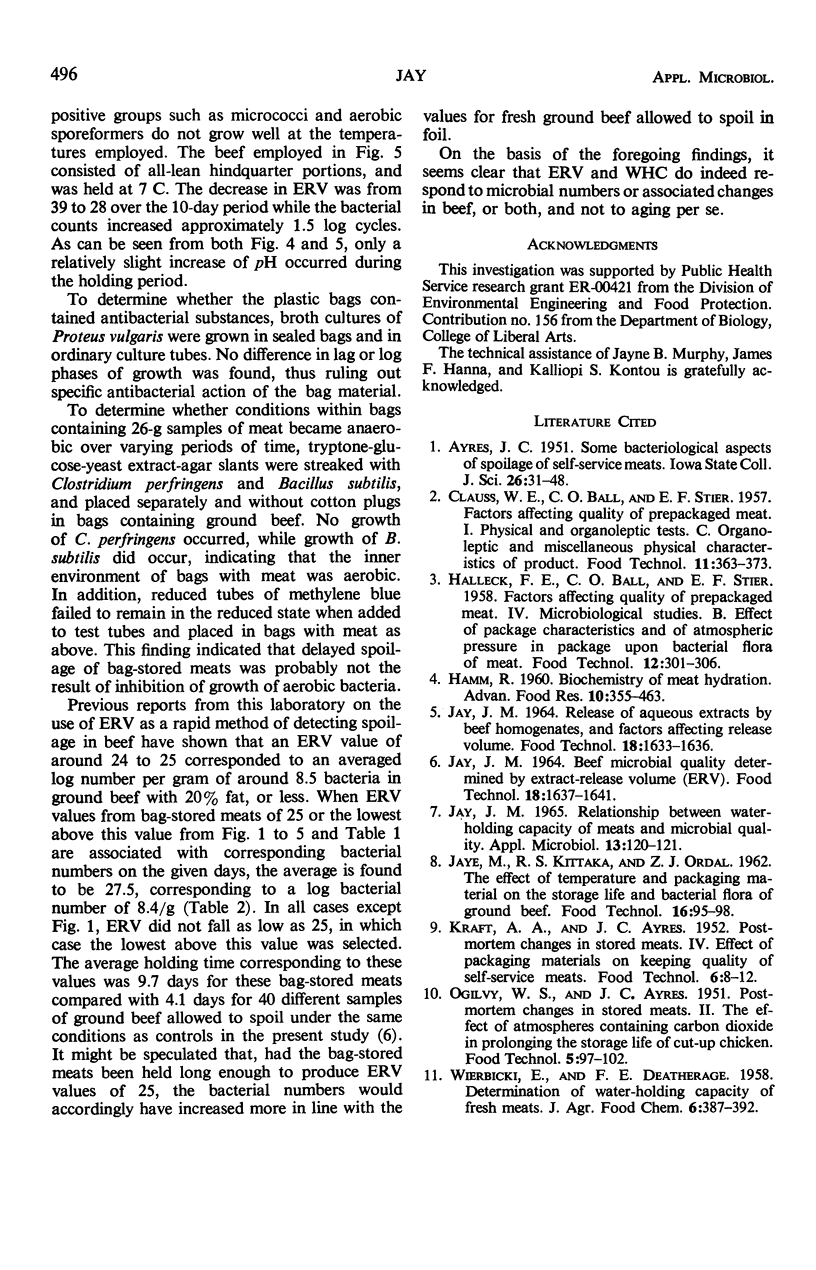
Images in this article
Selected References
These references are in PubMed. This may not be the complete list of references from this article.
- HAMM R. Biochemistry of meat hydration. Adv Food Res. 1960;10:355–463. doi: 10.1016/s0065-2628(08)60141-x. [DOI] [PubMed] [Google Scholar]
- JAY J. M. RELATIONSHIP BETWEEN WATER-HOLDING CAPACITY OF MEATS AND MICROBIAL QUALITY. Appl Microbiol. 1965 Jan;13:120–121. doi: 10.1128/am.13.1.120-121.1965. [DOI] [PMC free article] [PubMed] [Google Scholar]






